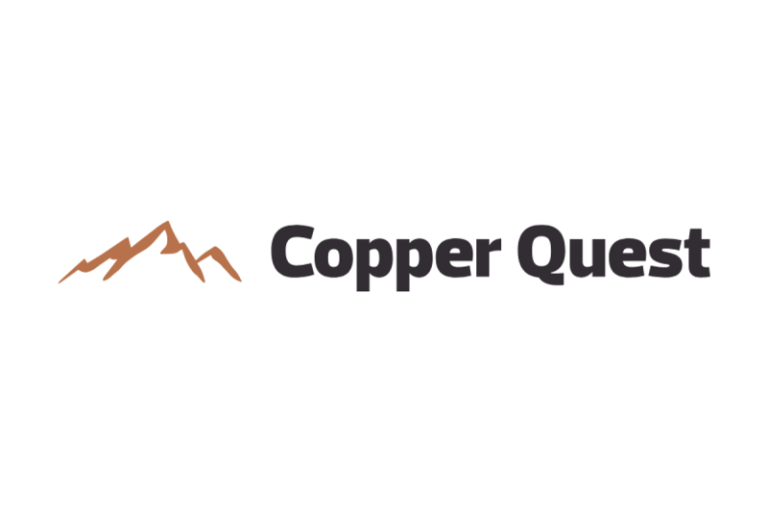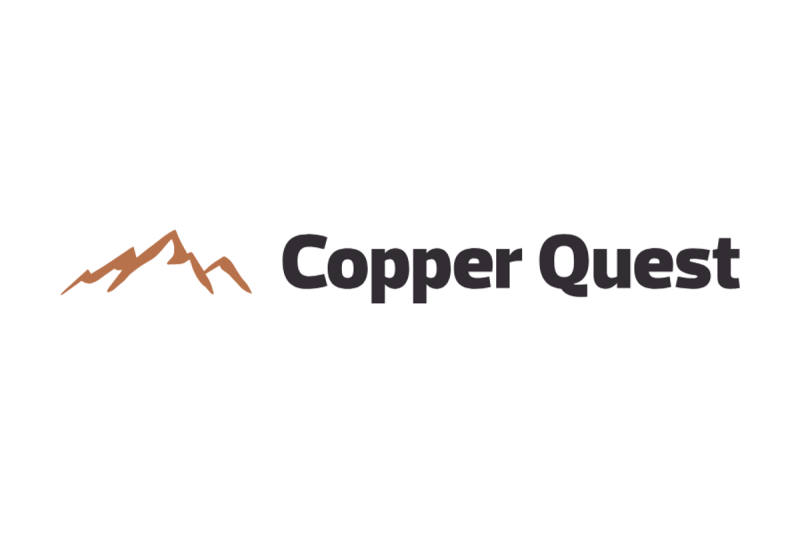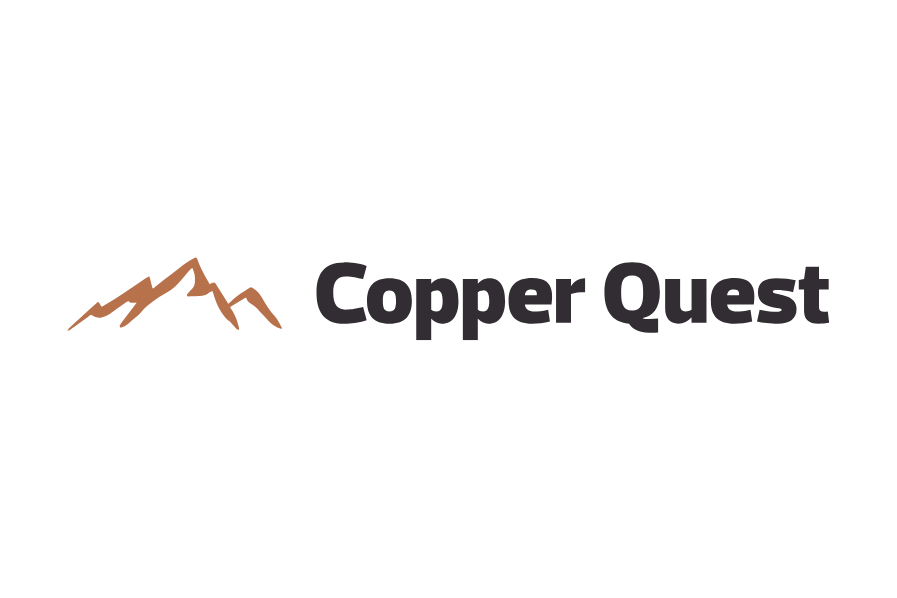Copper Quest Exploration Inc. (CSE: CQX,OTC:IMIMF; OTCQB: IMIMF; FRA: 3MX) (‘ Copper Quest ‘ or the ‘ Company ‘) is pleased to announce it has entered into a strategic partnership with U.S. based Exploration Technologies Inc. (‘ ExploreTech ‘) to deploy generative artificial intelligence across its project portfolio, beginning with the Kitimat Copper-Gold Project in British Columbia. The Company has also completed an initial work program at Kitimat and expanded its geological thesis based on historical datasets and updated field observations.
EXPLORETECH PARTNERSHIP OVERVIEW
ExploreTech integrates drilling, IP/magnetics, geochemistry, structural data, satellite imagery, and field observations into a unified 3D geological framework. The system generates thousands of subsurface model scenarios, evaluates probability, and optimizes drill plans for the highest-priority copper-gold targets. The technology has been successfully applied on multiple porphyry systems.
ExploreTech will collaborate with Copper Quest’s team on their portfolio of projects, with the Kitimat Copper-Gold Project being processed first.
ExploreTech will:
- Conduct AI-driven reprocessing and inversion of historical geophysical datasets
- Generate geological simulations to resolve concealed intrusive centers, alteration, and mineralization
- Produce probability-ranked target clusters
- Recommend optimized drillhole placement, orientations, and depths
- Integrate Copper Quest’s 2025 soil and rock geochemical data
- Provide a fully integrated drill targeting package for the Kitimat Project
The technology is ideally suited for covered porphyry systems such as Kitimat, where limited outcrop and shallow till cover obscure significant subsurface features.
KITIMAT WORK PROGRAM SUMMARY
Copper Quest engaged Hardline Exploration to complete a reconnaissance field program at Kitimat in November 2025, collecting soil and rock samples, documenting structural and lithological observations, and assessing access routes.
Field Highlights
- 24 soil samples collected along two soil lines (assays pending)
- Eight rock samples collected from outcrop and historical working exposures (assays pending)
- Bedrock consists of quartz monzonite
- Strong silicification
- 5–10% disseminated fine-grained pyrite
- Traces of chalcopyrite
- Local molybdenum
- Orange-rusty weathering, consistent with sulphide-rich alteration
- Access roads on the claims are intact
- Historical logging/exploration roads provide excellent future drill access
These observations are indicative of the presence of a large altered intrusive system consistent with a productive porphyry environment.
HISTORICAL DRILLING: CONFIRMATION OF A SIGNIFICANT CU-AU SYSTEM
Exploration at Kitimat dates to the late 1960s. The most significant work was completed by Decade Resources Ltd. in 2010, which drilled 16 diamond holes totaling 4,437.5 m at the Jeannette Cu-Au Zone.
Notable Drill Intervals (2010)
- Hole J-7: 117.07 m @ 1.03 g/t Au and 0.54% Cu (from 1.52 m to 118.60 m)
- Hole J-1: 103.65 m @ 1.00 g/t Au and 0.55% Cu (from 9.15 m to 112.80 m)
- Hole J-2: 107.01 m @ 0.80 g/t Au and 0.45% Cu (from 6.10 m to 113.11 m)
- Hole J-8: 112.20 m @ 0.41 g/t Au and 0.33% Cu (from 11.89 m to 124.09 m)
(Kruchkowski, E., 2010, BC Assessment Report #31807)
Interpretation
- Long, continuous, near-surface copper-gold intervals
- Mineralization remains open at depth
- Geological indicators suggest the system extends laterally beyond the drilled area
- Vectoring from 2010 drilling trends northeast toward a concealed porphyry center
- No systematic follow-up drilling has been completed in 15 years
Copper Quest believes these results represent a strong opportunity for discovery within a larger, buried hydrothermal system.
2010 Drilling – Collar Location Data:
| Hole ID |
Easting |
Northing |
Elevation |
Depth (m) |
Dip |
Azimuth |
| J-7 |
517657.0 |
6001864.5 |
366 |
167.38 |
-50 |
070 |
| J-1 |
517662.0 |
6001843.0 |
359 |
192.07 |
-45 |
045 |
| J-2 |
517662.0 |
6001843.0 |
359 |
304.88 |
-50 |
045 |
| J-8 |
517657.0 |
6001864.5 |
366 |
295.43 |
-60 |
070 |
| Coordinates given in NAD83, UTM Zone 9N. Data from Kruchkowski, E., 2010, BC Assessment Report #31807. |
| |
MANAGEMENT COMMENTS
Brian Thurston, CEO of Copper Quest
‘The Kitimat Project hosts excellent, historic mineralized intervals interpreted to represent a buried porphyry system. The long, near-surface copper-gold intercepts drilled in 2010 remain open and were never systematically followed up. ExploreTech’s AI platform will allow us to integrate decades of fragmented datasets and directly target the buried porphyry center that the geological evidence strongly supports.’
Alex Miltenberger, CEO of ExploreTech
‘Our generative AI technology evaluates thousands of geological and geophysical scenarios to identify the most probable mineralized centers. We look forward to supporting Copper Quest in unlocking the full potential of their portfolio of projects starting with the Kitimat Copper-Gold project.’
NEXT STEPS
- Deliver all historical datasets to ExploreTech
- Begin AI-driven modeling and geophysical inversion
- Integrate 2025 soil and rock geochemical results
- Receive probability-ranked target clusters and drillhole trajectories
- Finalize the 2025–2026 exploration and drilling program
- Assess applying ExploreTech’s technology to additional Copper Quest properties
NON-BROKERED FULLY-SUBSCRIBED FINANCING
Copper Quest is pleased to announce that the Company has arranged a non-brokered private placement financing of 10,142,104 common shares of the Company to be issued on a flow-through basis (the ‘ Flow-Through Shares ‘) at a price of $0.19 per Flow-Through Share for aggregate gross proceeds of $1,927,000 (the ‘ Flow-Through Offering ‘).
The Flow-Through Offering is fully subscribed and finder’s fees will be applicable.
Each Flow-Through Share will be designated as either a ‘flow-through share’ or ‘critical mineral flow-through share’, as applicable, within the meanings of the Income Tax Act (Canada). The gross proceeds from the issuance of the Flow-Through Shares will be used to incur ‘Canadian exploration expenses’ that qualify as ‘flow-through mining expenditures’ or ‘flow-through critical mineral mining expenditures’, as applicable, as such terms are defined in the Income Tax Act (Canada), which will be renounced to subscribers with an effective date no later than December 31, 2026, all in accordance with the Income Tax Act ( Canada ) and applicable provincial legislation.
All securities to issued in connection with the Flow-Through Offering will be subject to a statutory hold period of four months from the date of issuance in accordance with applicable Canadian securities legislation. Closing of the Flow-Through Offering is anticipated to occur within a week from the date hereof and is subject to the receipt of all requisite approvals, including the acceptance of the Canadian Securities Exchange.
An insider of the Company will be participating in the Offering. The issuance of Flow-Through Shares to an insider will constitute a ‘related party transaction’ as defined in Multilateral Instrument 61-101 Protection of Minority Security Holders in Special Transactions (‘ MI 61-101 ‘). The Company will be relying on the exemptions from the valuation and minority shareholder approval requirements of MI 61-101 contained in sections 5.5(a) and 5.7(1)(a) of MI 61-101, as neither the fair market value of the securities to be purchased by the insider, nor the consideration for the securities to be paid by such insider, will exceed 25% of the Company market capitalization. The Company will not file a material change report in respect of the related party transaction at least 21 days before the closing of the Flow-Through Offering, which the Company deems to be reasonable in order to complete the Offering in a timely manner.
The securities described herein have not been, and will not be, registered under the United States Securities Act of 1933, as amended (the ‘ U.S. Securities Act ‘), or any state securities laws, and may not be offered or sold within the United States except in compliance with the registration requirements of the U.S. Securities Act and applicable state securities laws or pursuant to available exemptions therefrom. This release does not constitute an offer to sell or a solicitation of an offer to buy any securities in the United States.
ABOUT EXPLORETECH
ExploreTech is a geological technology company specializing in AI-driven geological modeling, geophysical inversion, and drill-target optimization. Its platform is designed to rapidly identify concealed intrusive centers and mineralized systems with improved accuracy and efficiency.
COPPER: GLOBAL DEMAND & SUPPLY
Globally, copper demand continues to surge, driven by electrification, electric vehicles, renewable energy, and the massive expansion of AI and data center infrastructure. Yet supply remains constrained, with declining grades at existing mines, limited new discoveries, and prolonged permitting timelines. The resulting supply-demand imbalance underscores the importance of advancing new porphyry discoveries in stable jurisdictions like the U.S. and Canada. Copper Quest is aligned with this macro trend, positioning its North American portfolio of projects to become part of the next generation of copper and critical mineral discoveries.
QUALIFIED PERSON STATEMENT
The scientific and technical information in this news release has been reviewed and approved by Jeremy Hanson, P.Geo., a Qualified Person as defined under National Instrument 43-101 Standards of Disclosure for Mineral Projects (‘ NI 43-101 ‘). Mr. Hanson is independent of Copper Quest Exploration Inc. for the purposes of NI 43-101 and has verified the data disclosed in this news release, including sampling methods, geological descriptions, and historical exploration information.
ABOUT Copper Quest Exploration Inc.
Copper Quest (CSE: CQX,OTC:IMIMF; OTCQB: IMIMF; FRA: 3MX) is focused on building shareholder value through project acquisition, and exploration and development of its North American Critical Mineral portfolio of assets. The Company’s land package currently comprises five projects that span over 40,000+ hectares in great mining jurisdictions as well as the Kitimat Cu-Au Project and the past-producing Alpine Gold Mine that are both pending acquisition following due diligence.
Copper Quest has a 100% interest in the Stars Property, a porphyry copper-molybdenum discovery, covering 9,693 hectares in central British Columbia’s Bulkley Porphyry Belt. Contiguous to the Stars Property, Copper Quest has a 100% interest in the 5,389 hectare Stellar Property. CQX also has an earn-in option up to 80% and joint-venture agreement on the 4,700 hectare porphyry copper-molybdenum Rip Project, also in the Bulkley Porphyry Belt.
Copper Quest has a 100% interest in the Nekash Copper-Gold Project, a porphyry exploration opportunity located in Lemhi County, Idaho, along the prolific Idaho-Montana porphyry copper belt that hosts world-class systems such as Butte and CUMO. The project is fully road-accessible via maintained U.S. highways and forest service roads and currently consists of 70 unpatented federal lode claims covering 585 hectares.
Copper Quest has a 100% interest in the Thane Project located in the Quesnel Terrane of Northern BC which spans over 20,658 ha with 10 high-priority targets identified demonstrating significant copper and precious metal mineralization potential.
Copper Quest’s leadership and advisory teams are senior mining industry executives who have a wealth of technical and capital markets experience and a strong track record of discovering, financing, developing, and operating mining projects on a global scale. Copper Quest is committed to sustainable and responsible business activities in line with industry best practices, supportive of all stakeholders, including the local communities in which it operates. The Company’s common shares are principally listed on the Canadian Stock Exchange under the symbol ‘CQX’. For more information on Copper Quest, please visit the Company’s website at www.copper.quest.
On behalf of the Board of Copper Quest Exploration Inc.
Brian Thurston, P.Geo.
Chief Executive Officer and Director
Tel: 778-949-1829
For further information contact:
Investor Relations
info@copper.quest
Forward Looking Information
This news release contains certain ‘forward-looking information’ and ‘forward-looking statements’ (collectively, ‘ forward-looking statements ‘) within the meaning of applicable securities legislation. All statements, other than statements of historical fact included herein, including without limitation, statements regarding the terms and completion of the Flow-Through Offering, the payment of finder’s fees and issuance of Finder’s Warrants, the anticipated closing date and the planned use of proceeds of the Flow-Through Offering, and future operations and activities of Copper Quest, are forward-looking statements. Forward-looking statements are frequently, but not always, identified by words such as ‘expects’, ‘anticipates’, ‘believes’, ‘intends’, ‘estimates’, ‘potential’, ‘possible’, and similar expressions, or statements that events, conditions, or results ‘will’, ‘may’, ‘could’, or ‘should’ occur or be achieved. Forward-looking statements reflect the beliefs, opinions and projections on the date the statements are made and are based upon a number of assumptions and estimates based on or related to many of these factors. Such factors include, without limitation, the ability to obtain regulatory approval of the Flow-Through Offering, risks associated with possible accidents and other risks associated with mineral exploration operations, the risk that the Company will encounter unanticipated geological factors, risks associated with the interpretation of exploration results, the possibility that the Company may not be able to secure permitting and other governmental clearances necessary to carry out the Company’s exploration plans, the risk that the Company will not be able to raise sufficient funds to carry out its business plans, and the risk of political uncertainties and regulatory or legal changes that might interfere with the Company’s business and prospects. Readers should not place undue reliance on the forward-looking statements and information contained in this news release concerning these items. The Company does not assume any obligation to update the forward-looking statements of beliefs, opinions, projections, or other factors, should they change, except as required by applicable securities laws.
The Canadian Securities Exchange has not reviewed, approved or disapproved the contents of this press release, and does not accept responsibility for the adequacy or accuracy of this release.




































